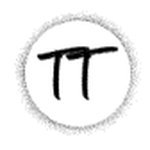The Origins of the Resume
The resume has its roots in the mid-20th century. Emerging during the 1950s, this pivotal tool started to take shape in response to evolving employment practices and social structures. Employers required a concise yet comprehensive overview of an applicant’s professional journey, educational background, and specific skill sets. However, the landscape of the workforce has evolved dramatically, prompting a notable shift in the metrics of candidate selection. The rapid emergence of technology and changing workplace dynamics have signalled a move towards valuing soft skills alongside hard skills. Employers increasingly recognise that these qualities contribute to an individual’s ability to thrive in diverse environments and collaborate effectively within teams.
Limitations of the Traditional Resume Format
This conventional approach does have some limitations, particularly in assessing candidates’ core skills and competencies. Let me present to you some potential drawbacks for you to consider;
A focus on experience over skills: resumes typically highlight only the most relevant positions and accomplishments, leading to a rigid representation of an individual’s professional journey. This static nature often fails to capture the nuances of a candidate’s abilities, such as soft skills, adaptability, and creative problem-solving. For example, a candidate may possess exceptional interpersonal skills that are not adequately conveyed through a job title or a list of responsibilities from previous roles. Consequently, hiring managers may overlook highly qualified individuals simply due to the limitations inherent in traditional resumes.
They’re organised by job titles: traditional resumes use job titles as headings, but these aren’t always as clear as employers would like. Creative names, like “success ambassador” make it difficult to understand what a candidate does, and there is no uniform use of titles. When resumes are uploaded into applicant systems, potential AI enabled systems can have a hard time matching titles and keywords. New titles are used every day that didn’t exist prior, and they don’t always give a clear picture of someone’s skillset.
They are static: candidates have to acquire new skills to stay current, and employers are often purchasing new technology that employees need to master, but resumes are static, requiring frequent revisions. Unless you update it frequently, a resume becomes outdated by the time you need to submit or forward it. While updating your LinkedIn profile provides real-time ease, it’s flawed, too. You’re still subject to your last job title leading off your experience.
The Future of Resumes in Hiring
As we look to the horizon of the hiring landscape, it becomes abundantly clear that the traditional resume may no longer hold the commanding presence it once did. The rapid evolution of technology and changes in workforce dynamics have paved the way for innovative alternatives that more effectively reflect a candidate’s abilities and potential, some of these alternatives include;
Tailored application forms: Design online applications with questions directly related to the job requirements, asking candidates to describe past situations where they demonstrated relevant skills and abilities, essentially acting as a mini interview through written responses.
Work samples or project-based assessments: For creative or technical roles, ask candidates to complete a short task or project that mirrors the work they would do on the job, allowing you to assess their practical skills and problem-solving abilities firsthand.
Skills assessments: Utilise online platforms that provide standardised tests to evaluate specific technical skills like coding, data analysis, or design proficiency. You could also try gamification in the application process, by letting candidates do this, each candidate profile provides you with an overview of the skills and personality traits of this candidate, matched to your hiring needs.
In-depth interviews: Conduct structured skills-based interviews with behavioural questions that delve into past experiences to understand how candidates have handled challenges and applied their skills in real-world situations.
Despite these advancements, the question remains: will traditional resumes become obsolete? While alternative methods are emerging, it is possible that resumes will evolve rather than disappear. They may serve as complementary tools in hiring, working alongside new technologies and methodologies to provide a comprehensive picture of candidates. Therefore, the future of resumes may involve a blend of old and new, adapting to meet the demands of a continuously developing job market.

